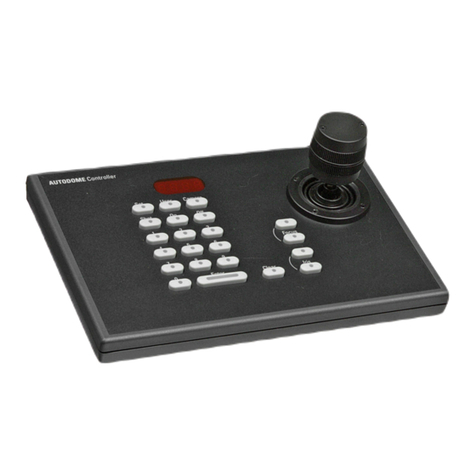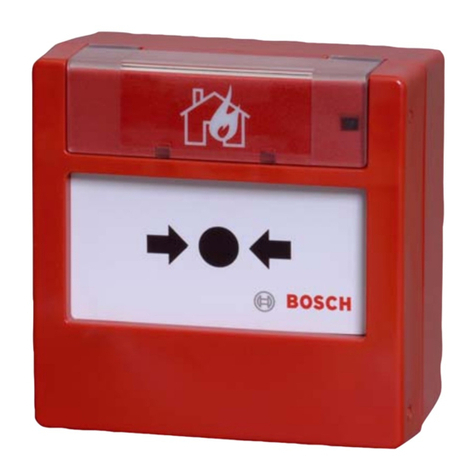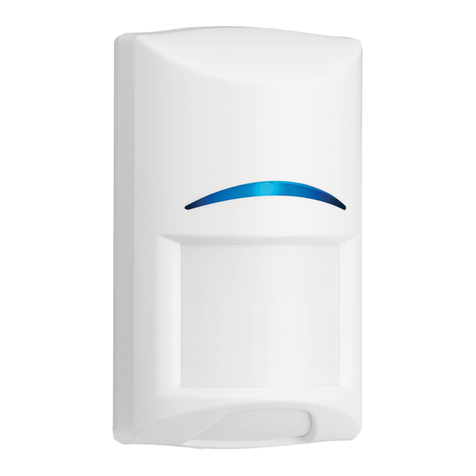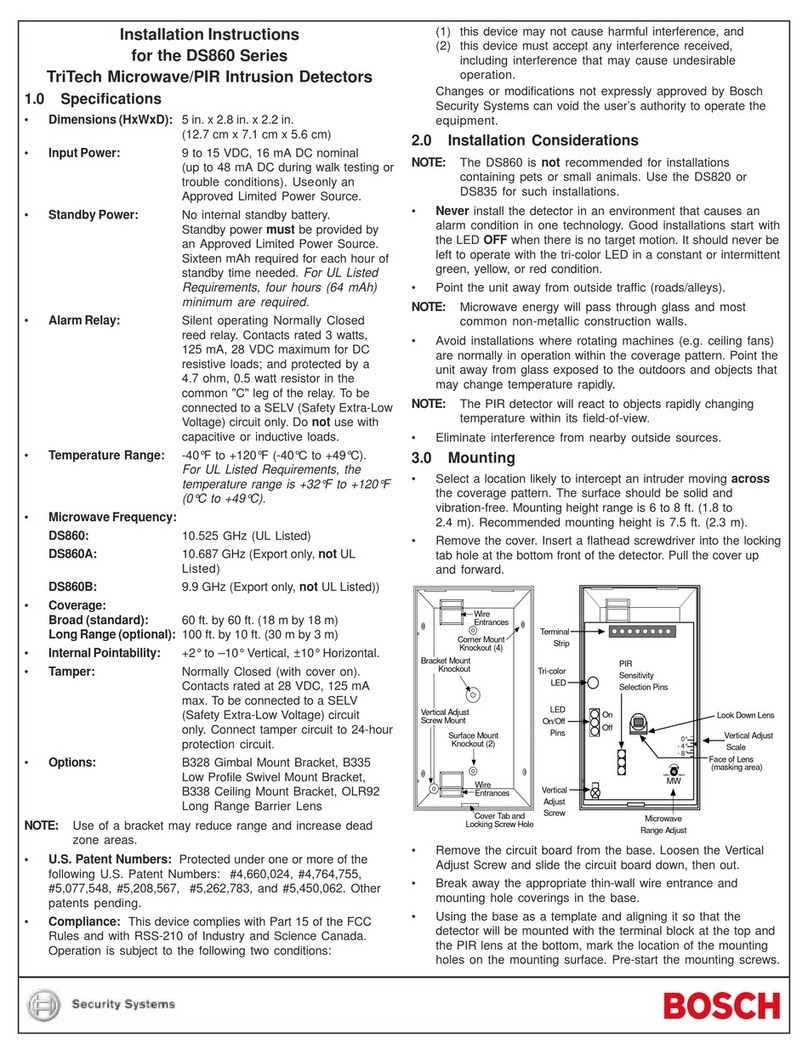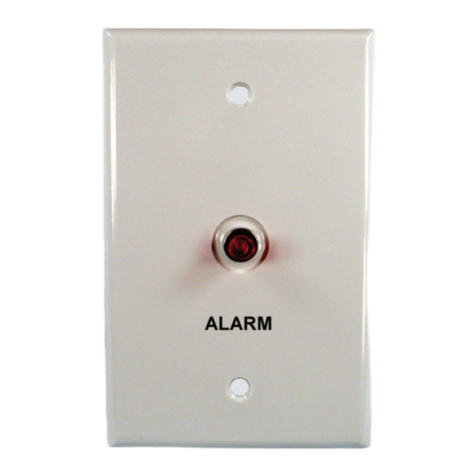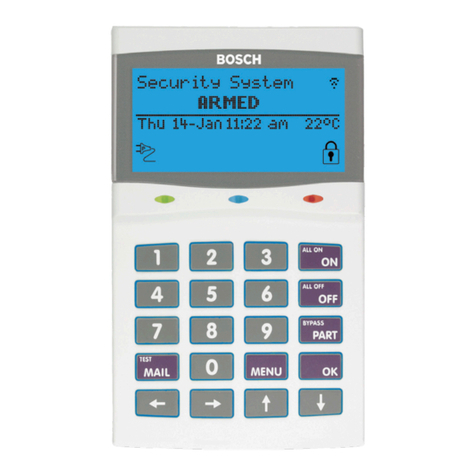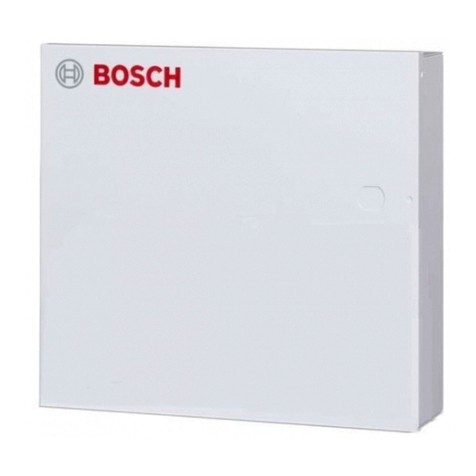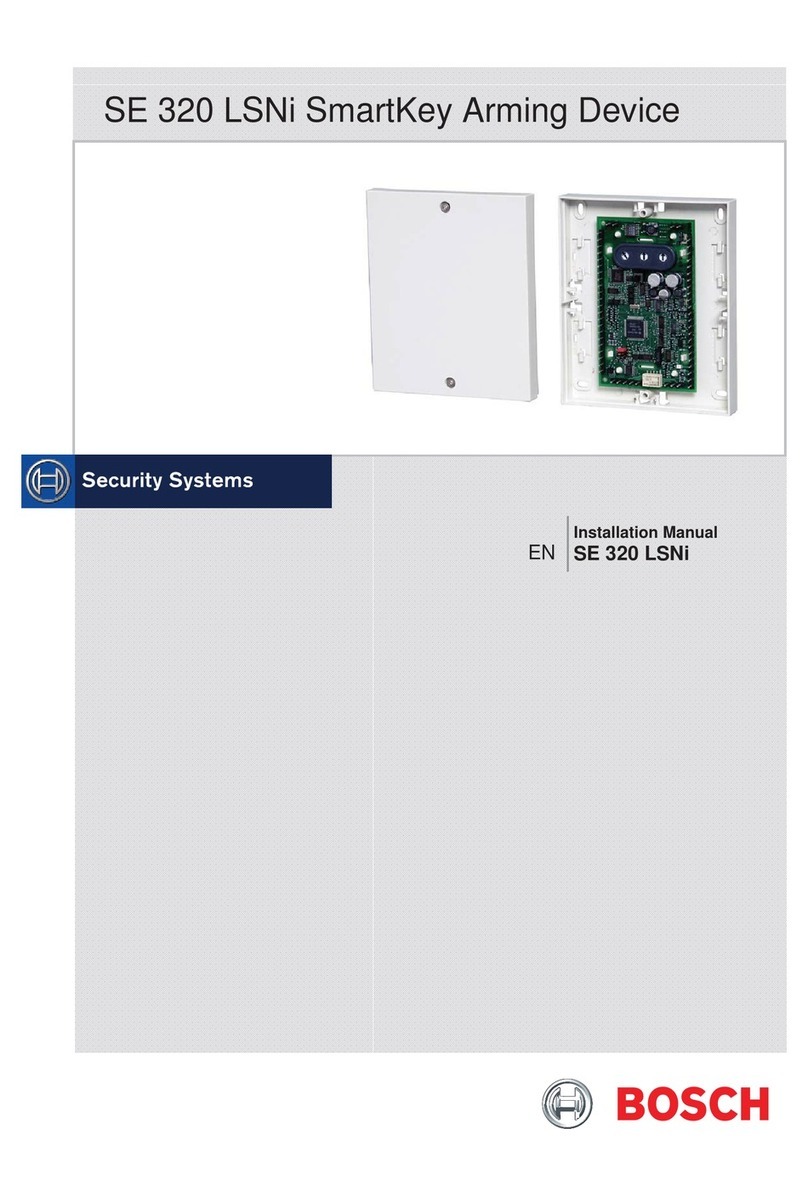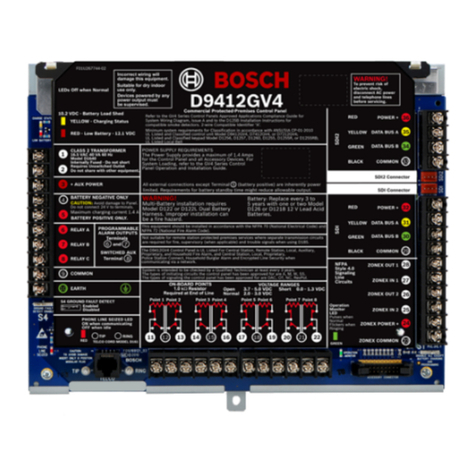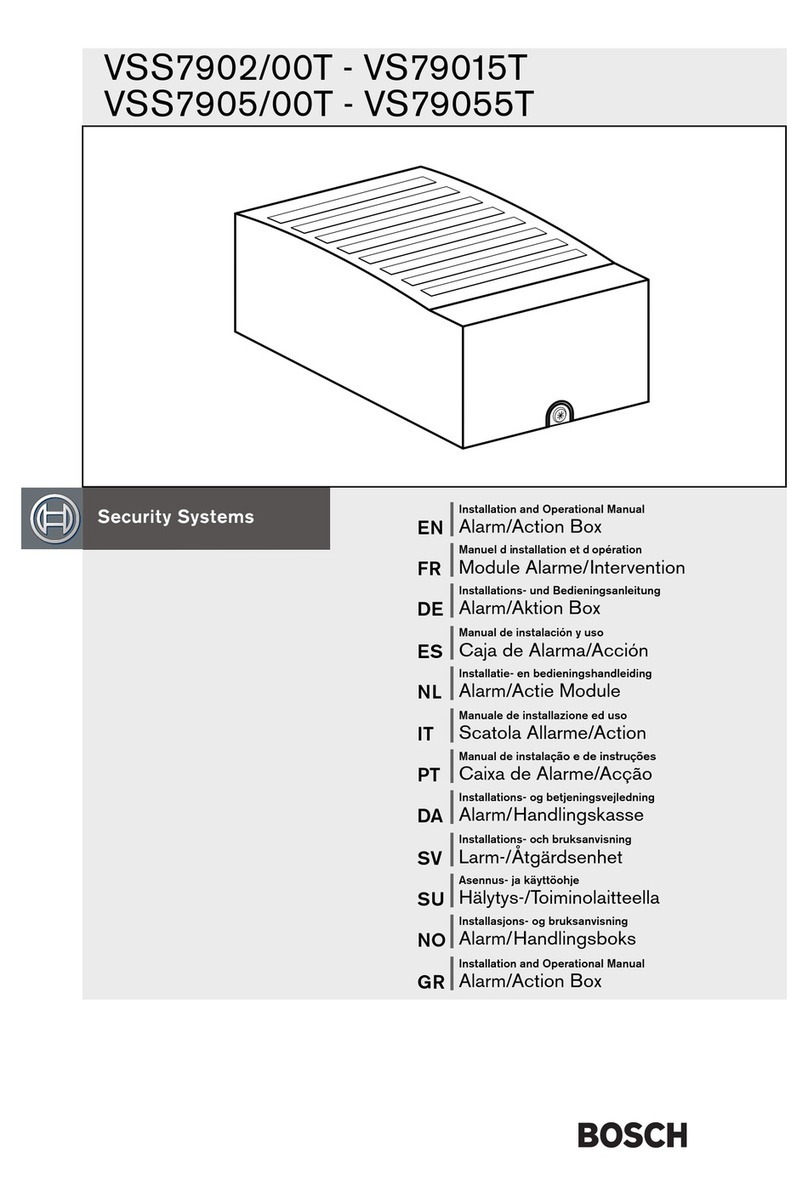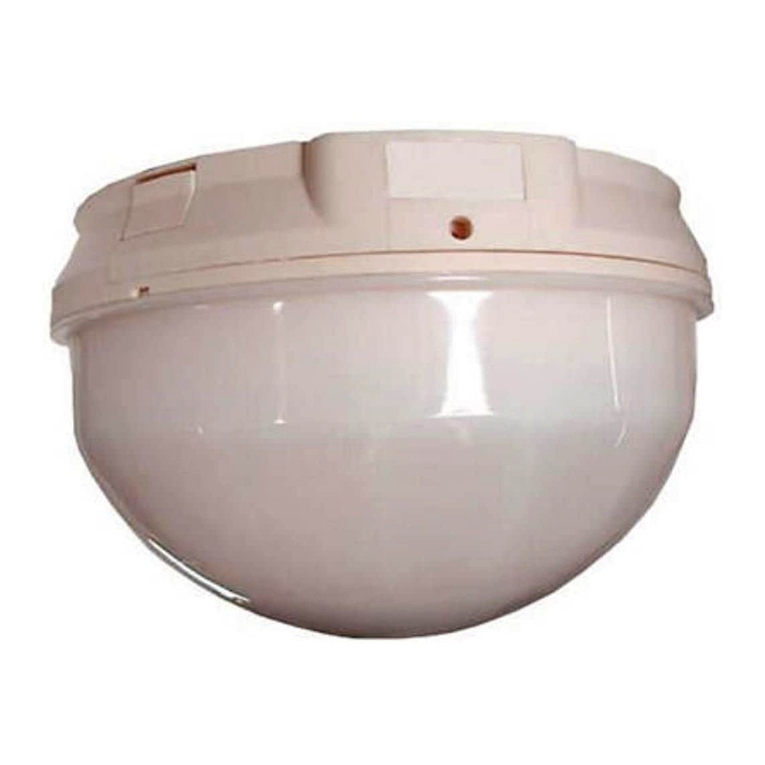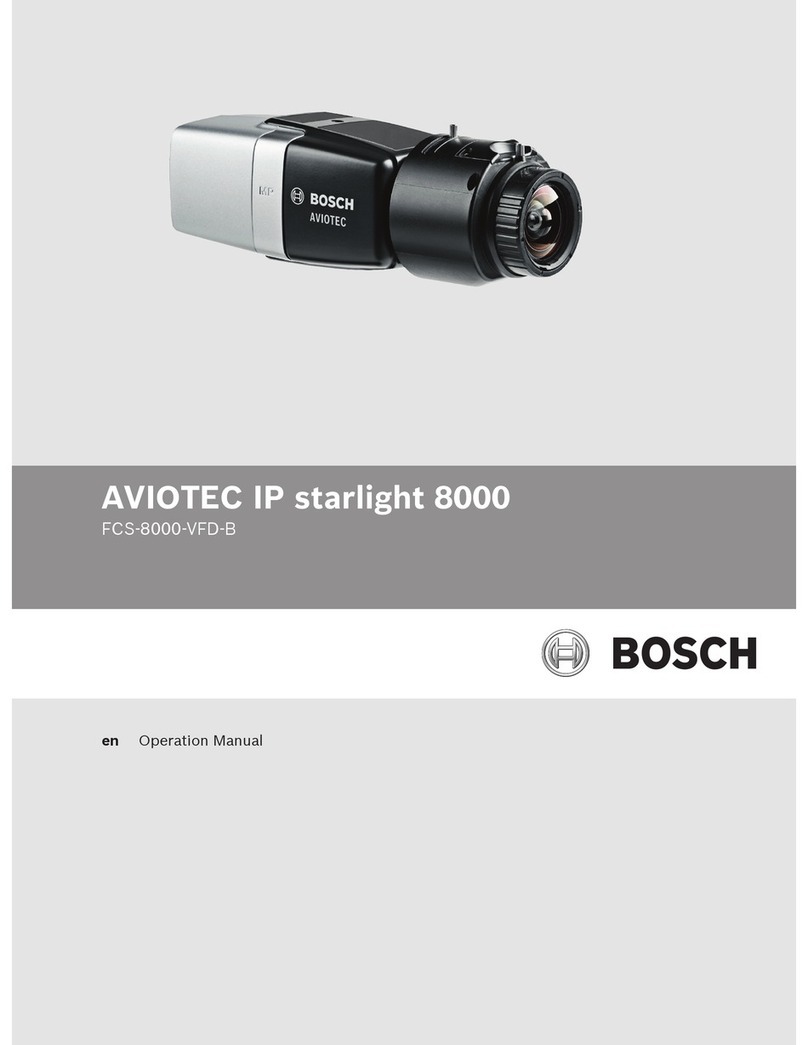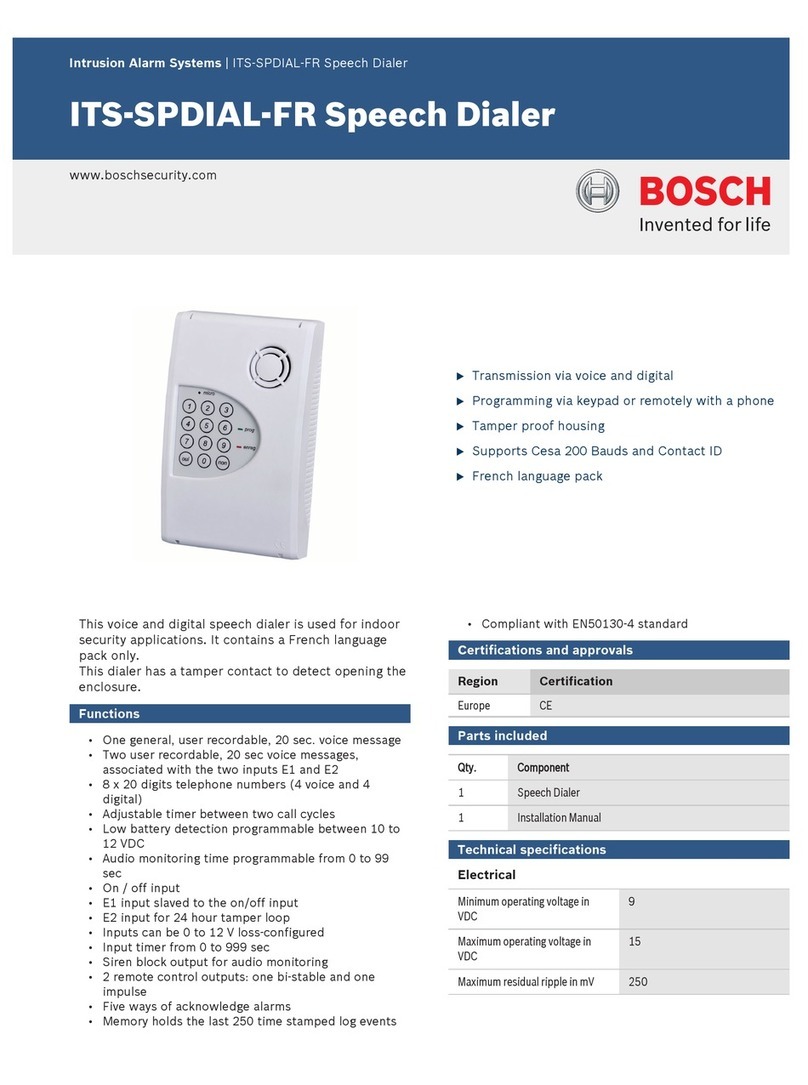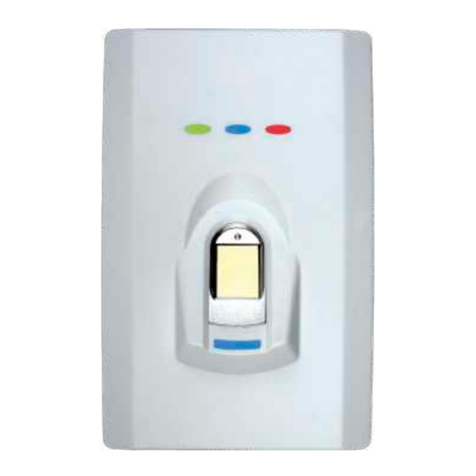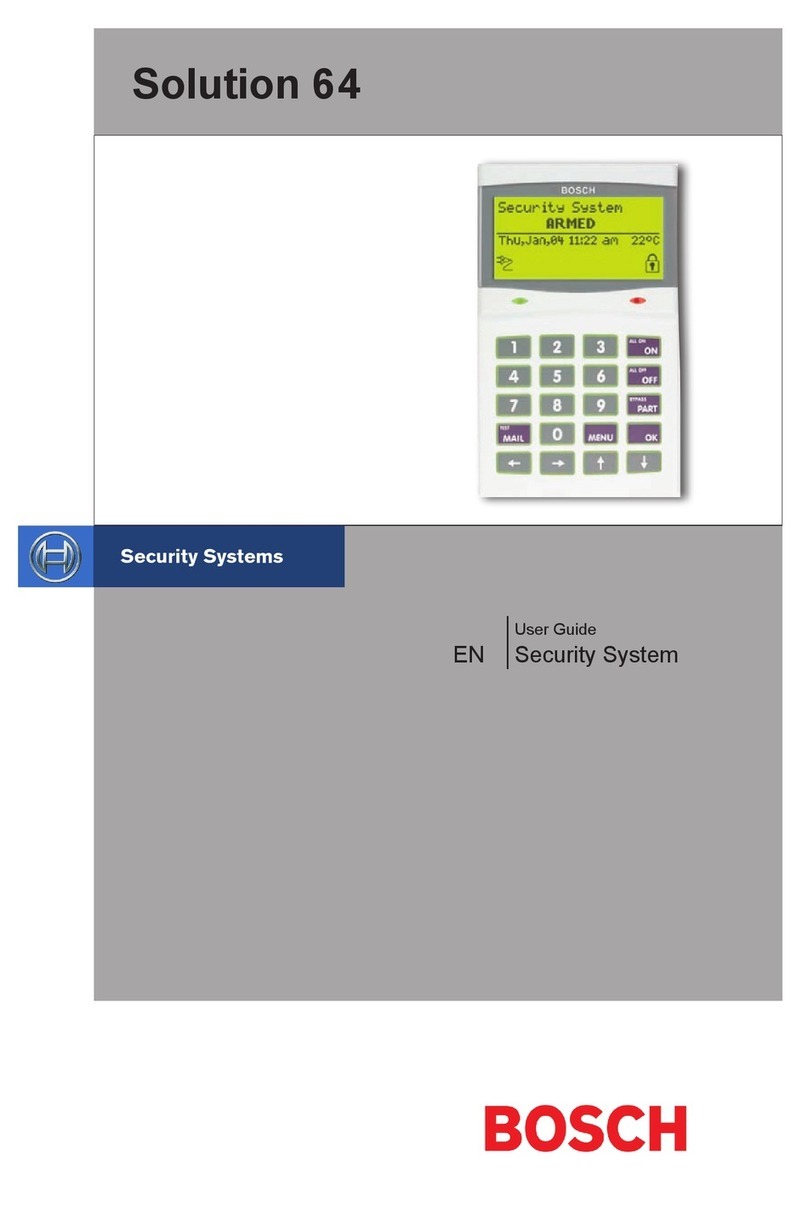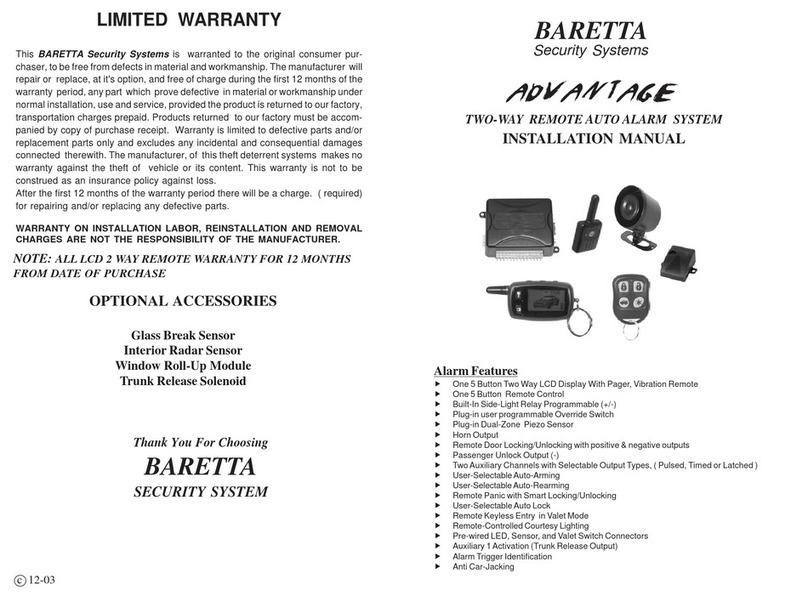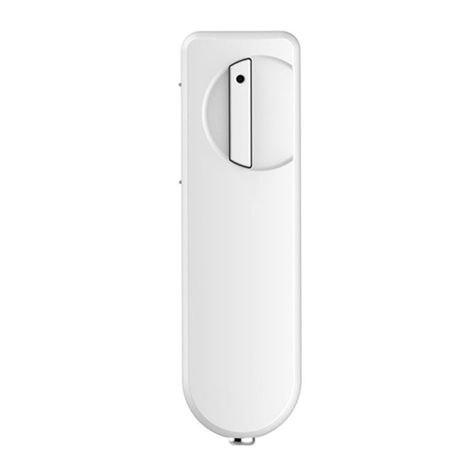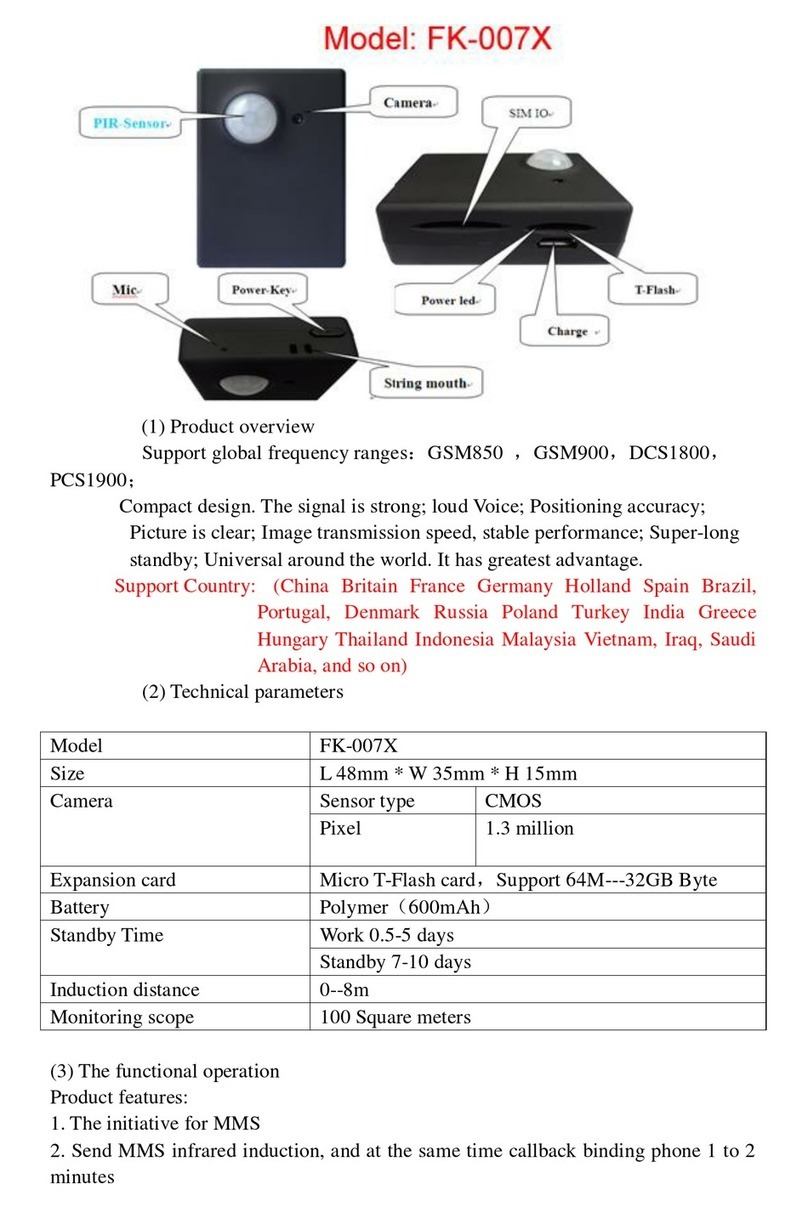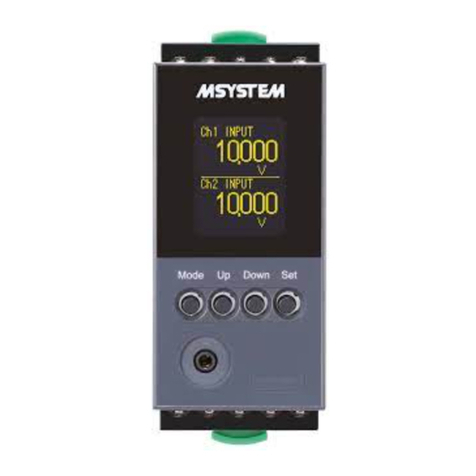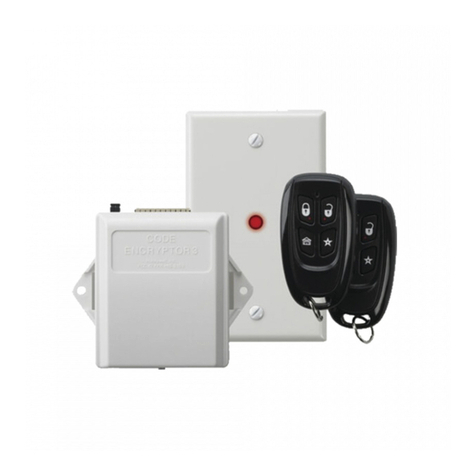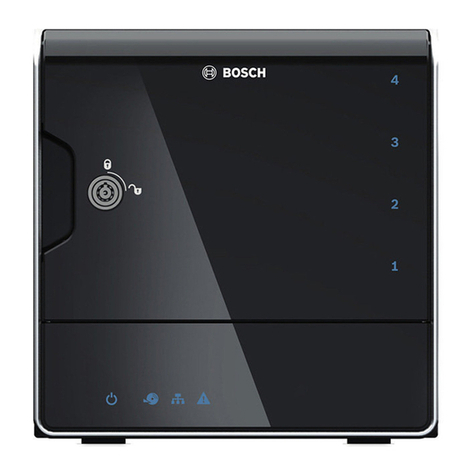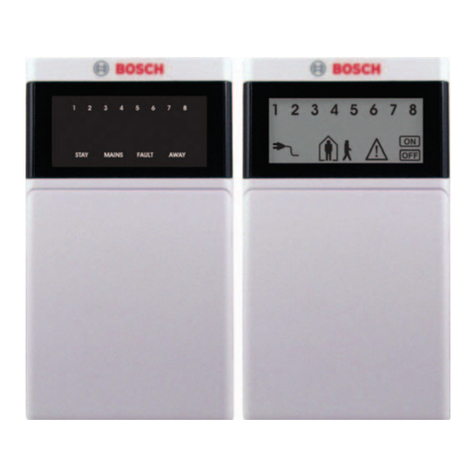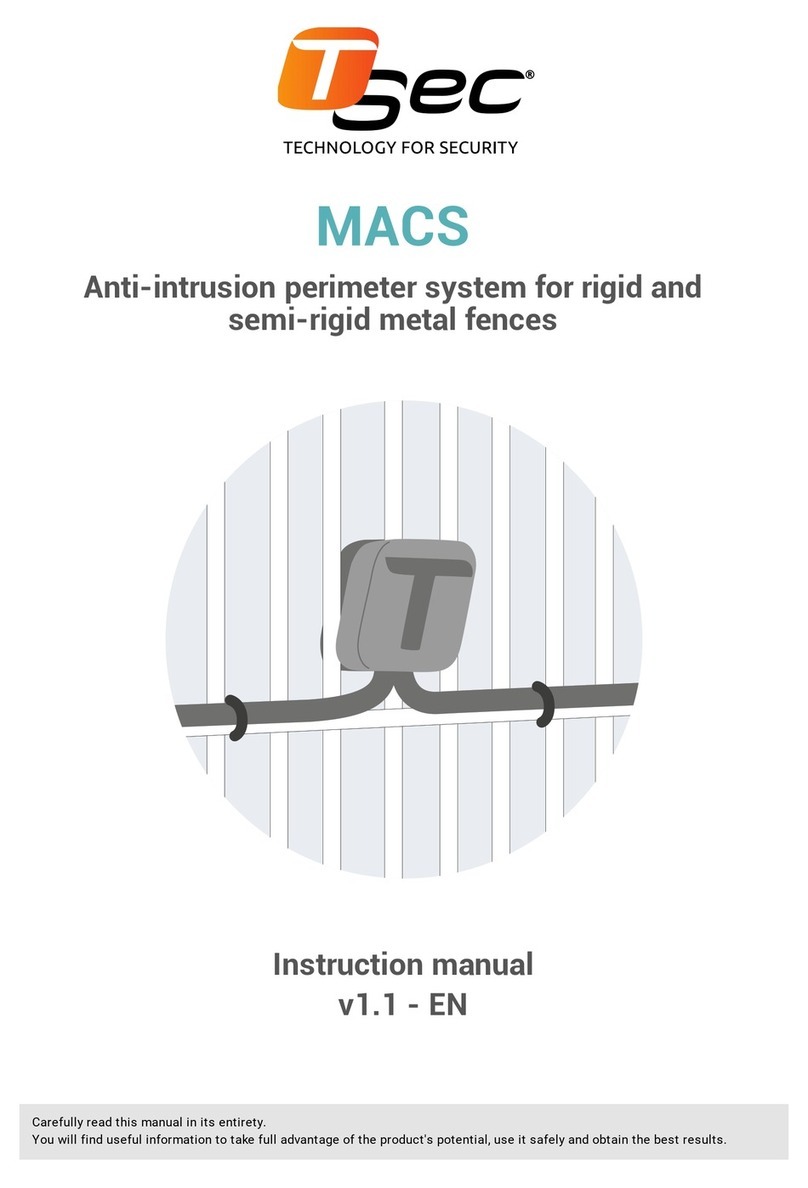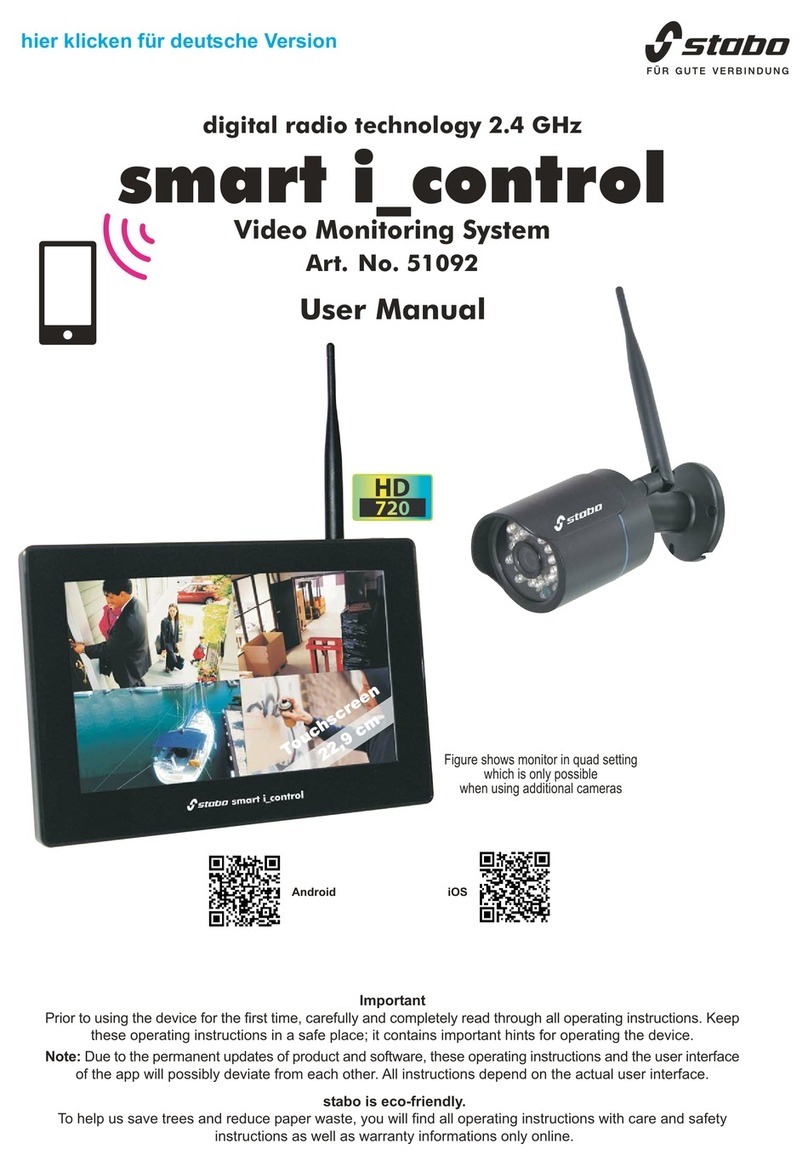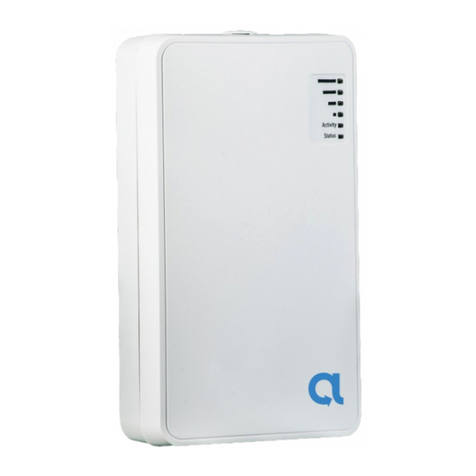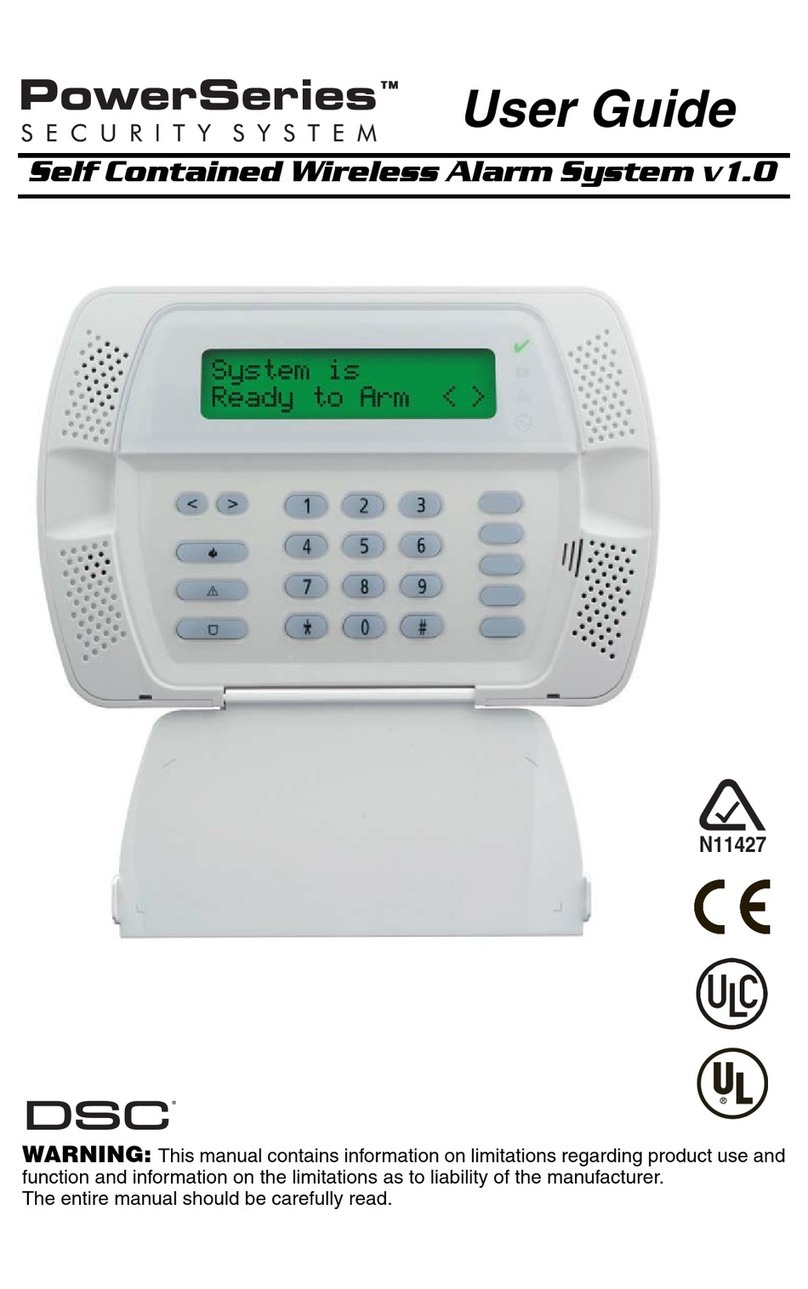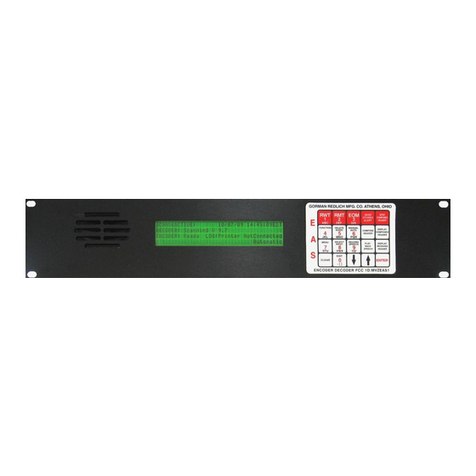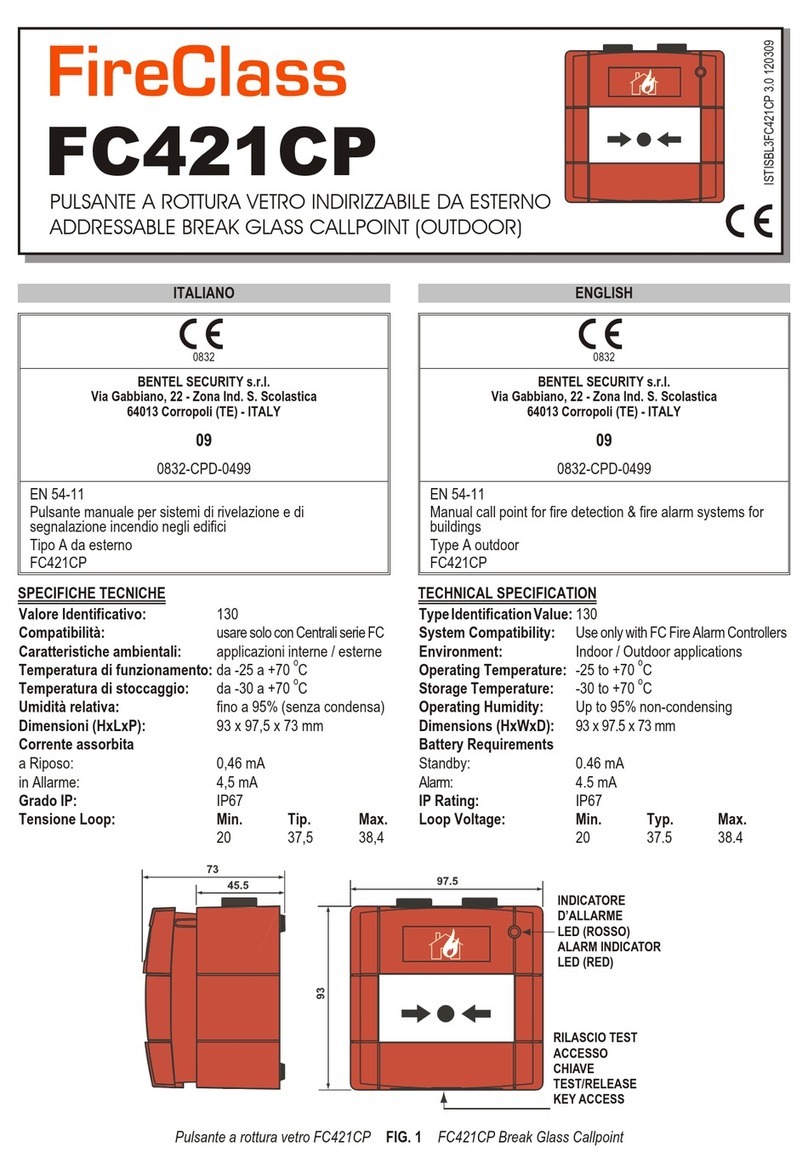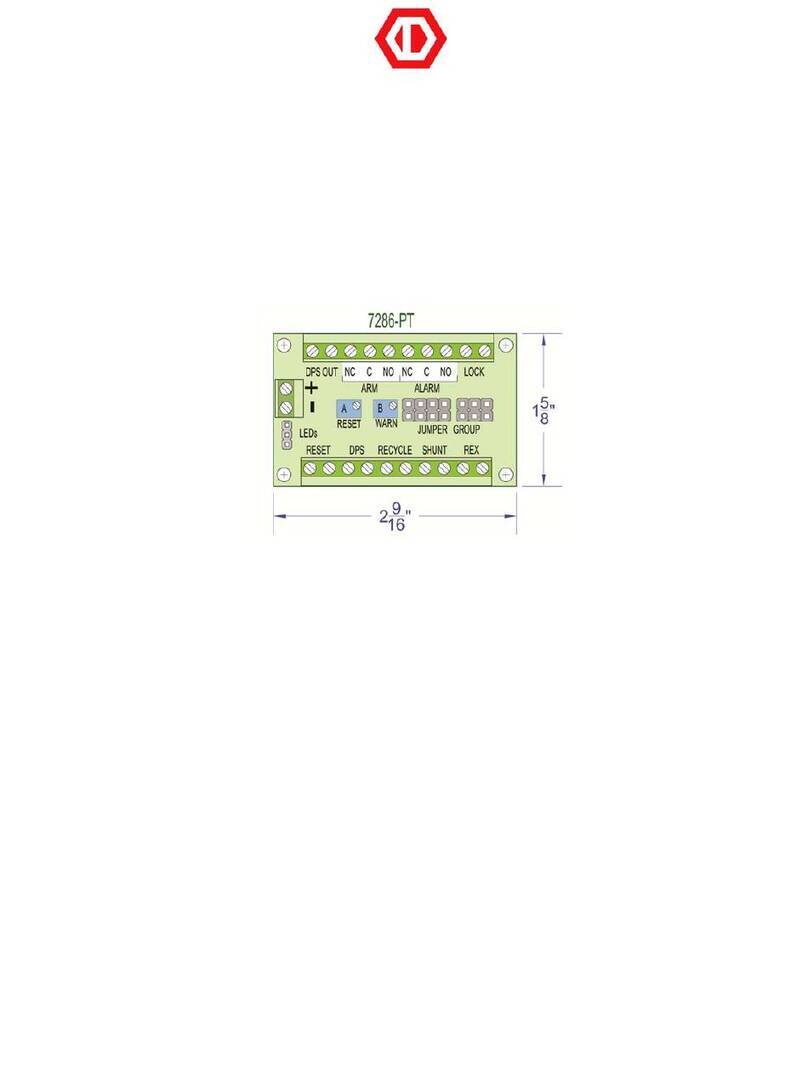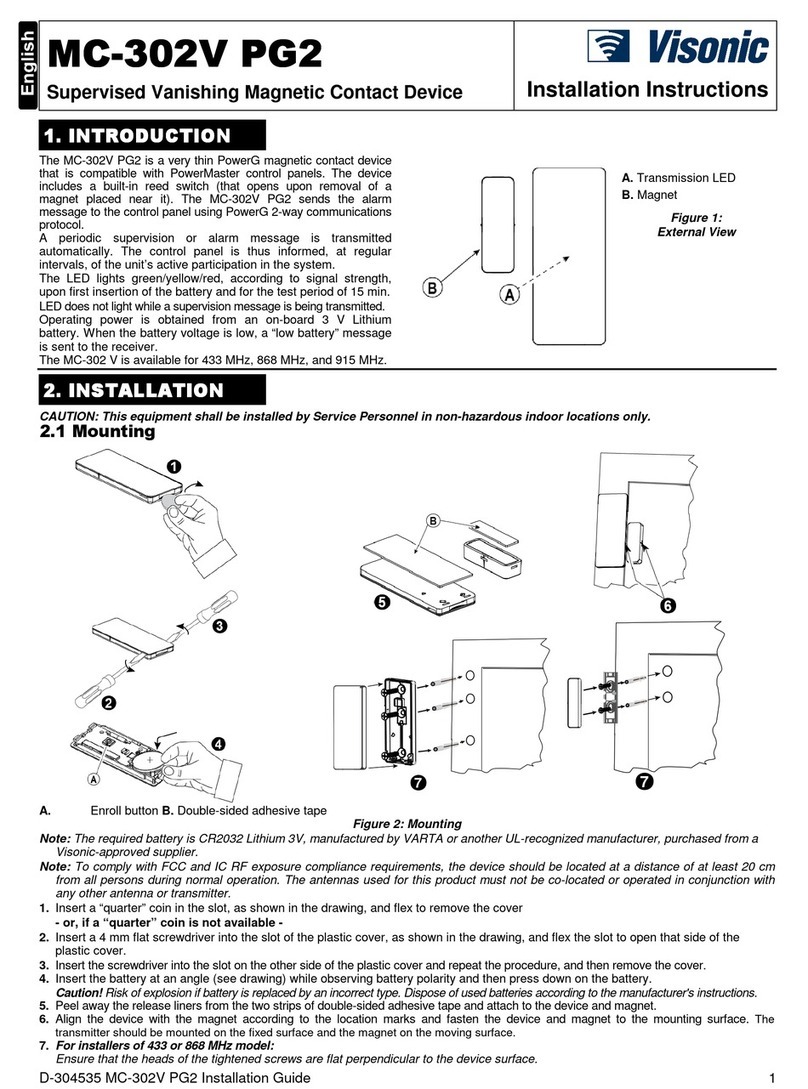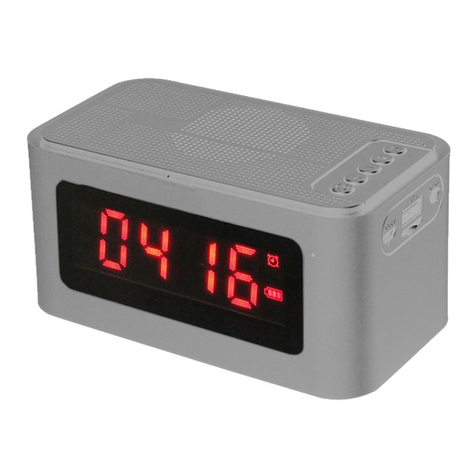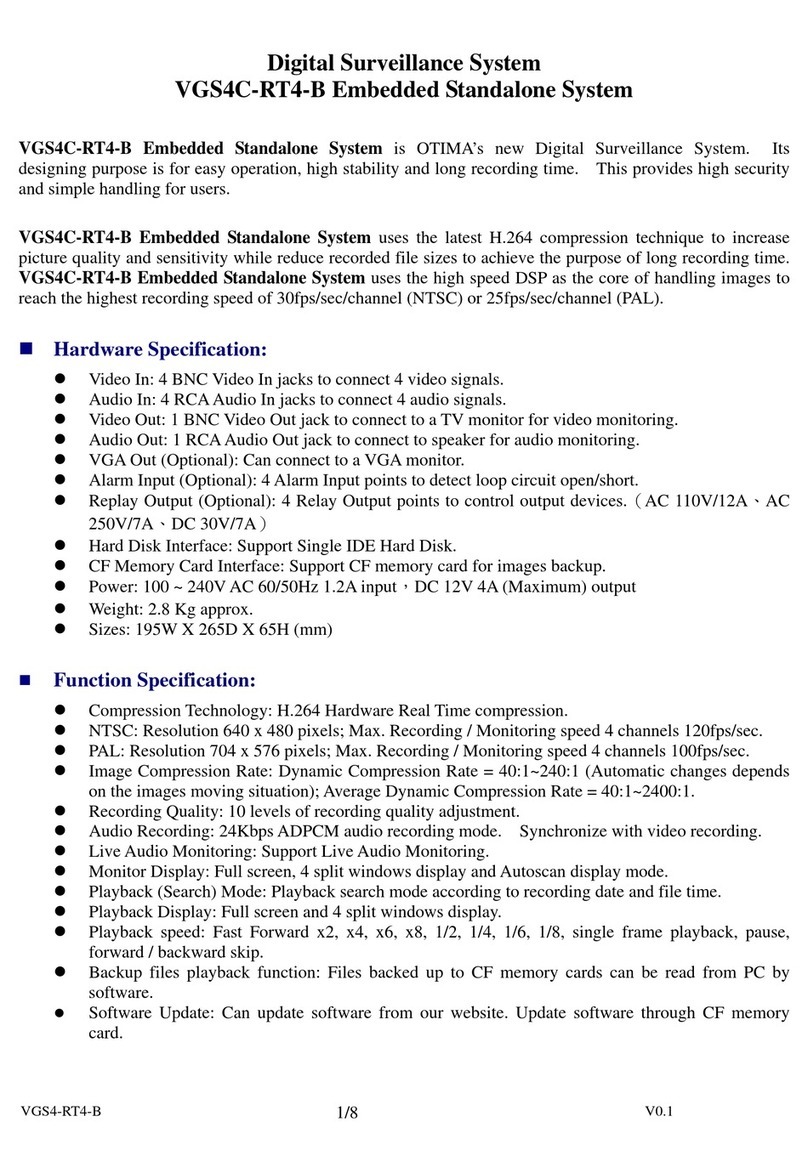
© 2004 Bosch Security Systems
130 Perinton Parkway, Fairport, New York, USA 14450-9199
Customer Service: (800) 289-0096; Technical Support: (888) 886-6189
03/04
DS937 Installation Instructions
P/N: 44508E Page 2
4.5 Wire as shown to use the Alarm Memory and First To Latch functions. 4.6 Set the LED On/Off Select Switch.
4.8 Mask unwanted detection zones (see
6.0 Coverage
Patterns
) by lifting the Lens Lock, rotating and removing the
Fresnel Lens, and covering the
unwanted lens areas with the
masking sticker.
4.9 Reassemble the detector.
Clean the Fresnel Lens
with a soft, clean, damp
cloth. Make sure there is no
dirt or fingerprints on the
lens.
5.0 Walk Test the detector. Wait until the LED stops flashing after
applying power to the detector to start walk tests. Observe the Alarm
LED while walking across the coverage area. It will light as you enter
the coverage area. Walk test from both directions to determine the
exact boundaries. Adjust the detector and continue walk testing until
the desired coverage pattern has been obtained.
6.0 Coverage
Patterns
NOTE: Walk testing should be done across the coverage pattern.
Alarm Memory only:
• Wiring of First To Latch is not needed.
• Run a single wire from the AM terminal
to switch A and then to +12 VDC.
• Switch A should stay in the closed
position for normal operation.
• When alarm history is needed, open
switch A. The LED of the DS937 with
alarm history will flash.
DS937 DS937
F.T.L. A.MF.T.L. A.M
SW
DC 12V
A
Control Panel
Notes:
1. If there is no alarm history, the DS937
operates the same as normal when
switch A is opened.
2. If switchAis closed after being opened,
the alarm memory will be cleared after
one second.
Alarm Memory in Conjunction with First
ToLatch:
• First To Latch identifies the first DS937
to alarm.
• Procedure is the same asAlarm Memory
function.
• When alarm history is checked, the
DS937 that alarmed first will have a
flashing LED.
During the warm-up
period, the LED
flashes for about 30
seconds and the
relay is kept in
alarm condition.
If you don’t want the alarm LED to light, it can
be turned off with this switch.
If the LED On/Off Select Switch is in Off mode,
the LED will indicate an alarm history when
using Alarm Memory only or when using Alarm
Memory in conjunction with First To Latch.
If the LED On/Off Select Switch is in On mode,
the LED will not operate in normal conditions
when using the Alarm Memory and First To
Latch functions.
Rotate Fresnel
Lens to remove
Lens Lock
Masking Sticker
Showing Zones
0
3
7Meters
010 23
Feet
130°
90°
1023
370
3
0
10
A
ACBB
A
B
01020
Feet
0
3
155
1.5
4.5
6
5101520
1.5
3
4.5
6
A
A
A
A
A
A
A
A
A
A
A
B
B
B
B
BBBB
B
B
B
C
30°
30°
LED On/Off
Select Switch
4.7 Set the Sensitivity Switch.
PulseCount:
4 pulse counts is the recommended setting for
locations where an intruder is expected to cover a
sizable portion of the protection area. The detector
tolerates harsh environments at this setting.
3 pulse counts is for locations where normal
environmental transients are expected.
2 pulse counts is the normal setting for areas where
thermal and illumination transients are minimal.
1 pulse count is for fast response to intruder signals. It is for use in quiet environments
where thermal and illumination transients are not anticipated.
Detection Range
Adjustment:
The Detection Range
Adjustment may also be
used to fine tune the
sensitivity of the detector.
Adjust the control for the
lowest setting that provides
good catch performance.
Detection
Range
Adjustment
L
A
A
A
A
A
A
A
A
AAA
A
C
B
B
B
B
B
BB
B
B
B
B
B
4. Tighten Cover Screw
5. Align Outer Cover Ring with
Detector and press until it
locks in place.
3. Rotate Cover to lock
1. Align Ridges
2. Push Cover on
Align with Ridges
Align Notches
Align with Cover Screw
Rotate
